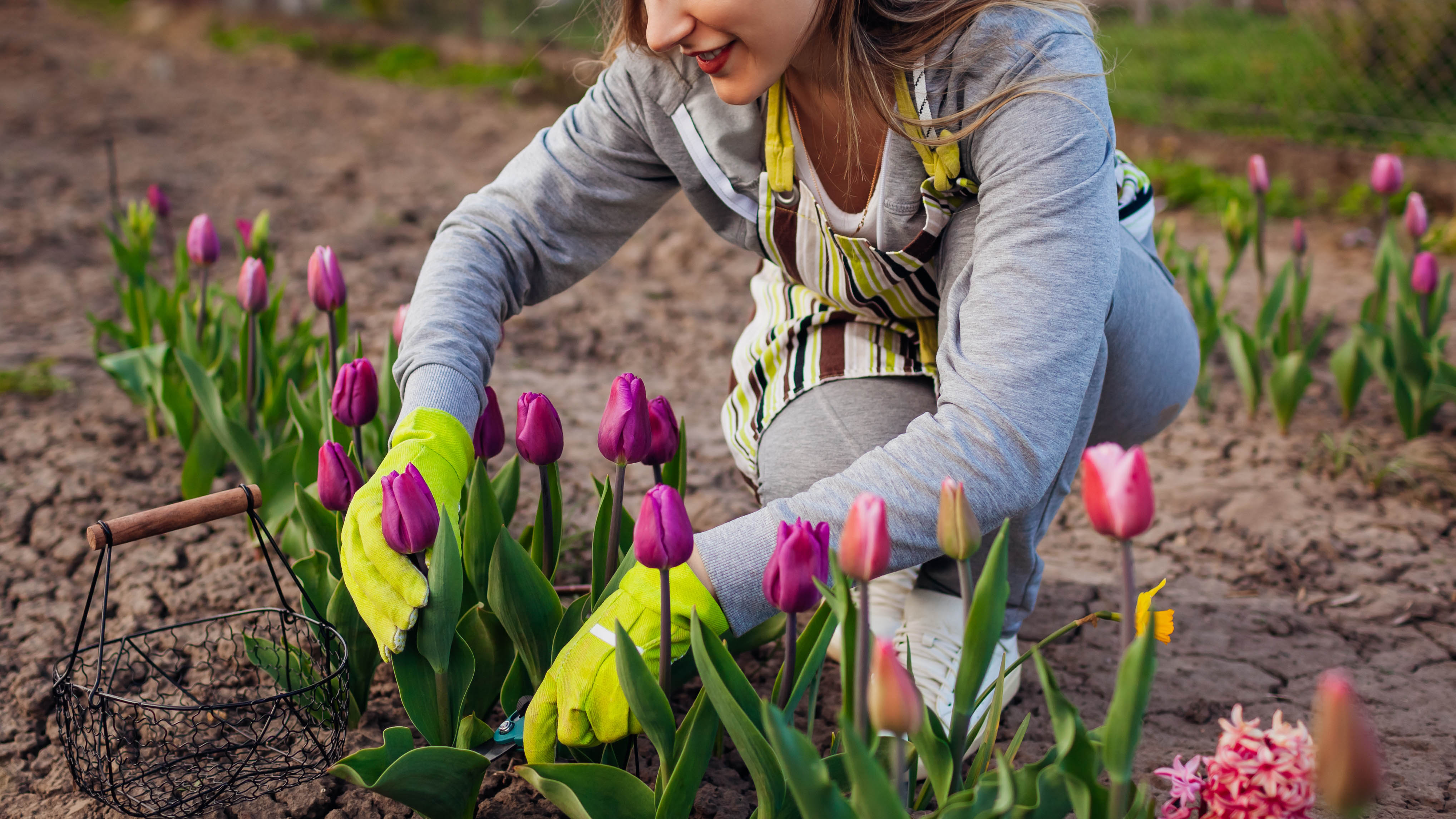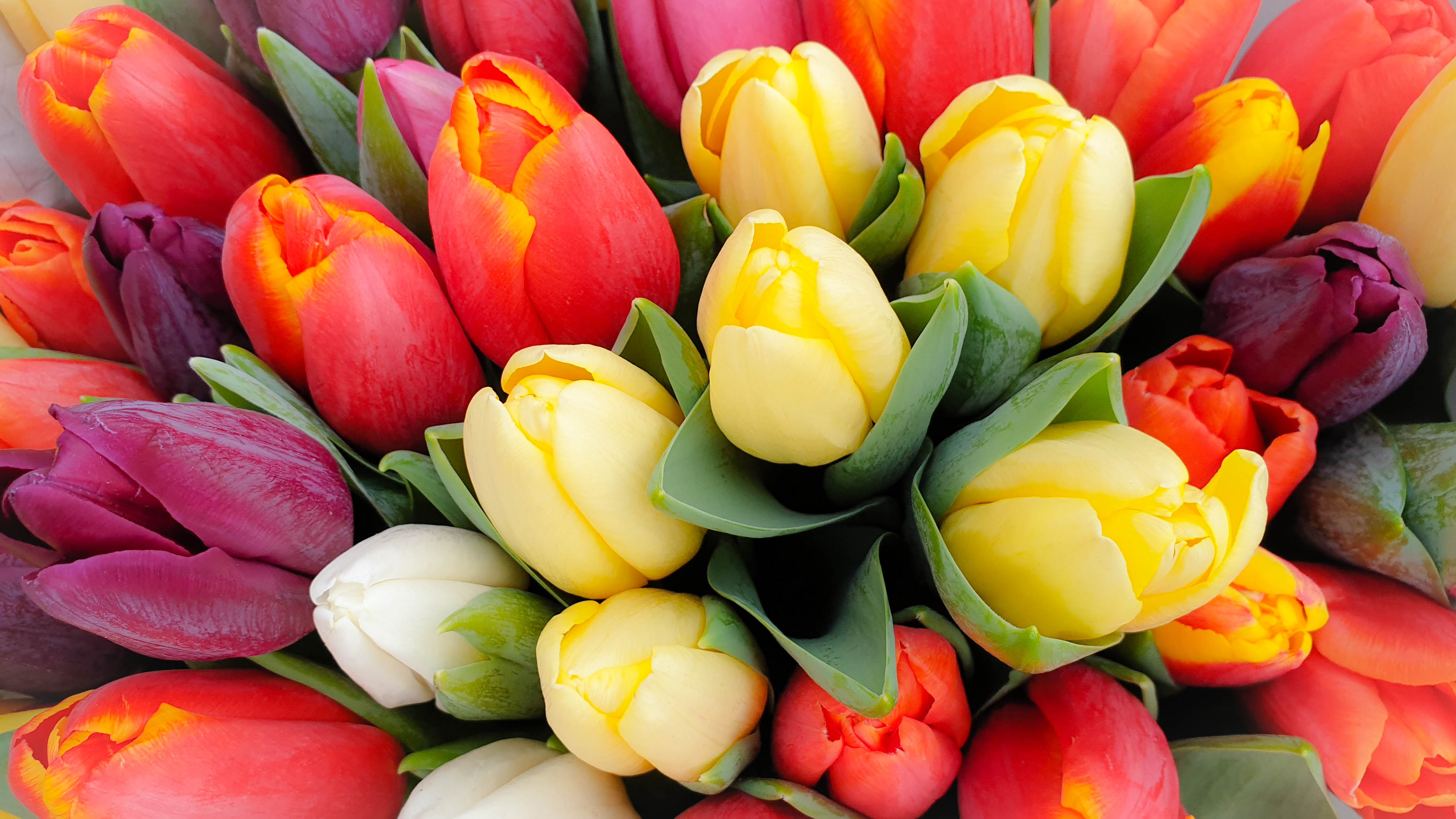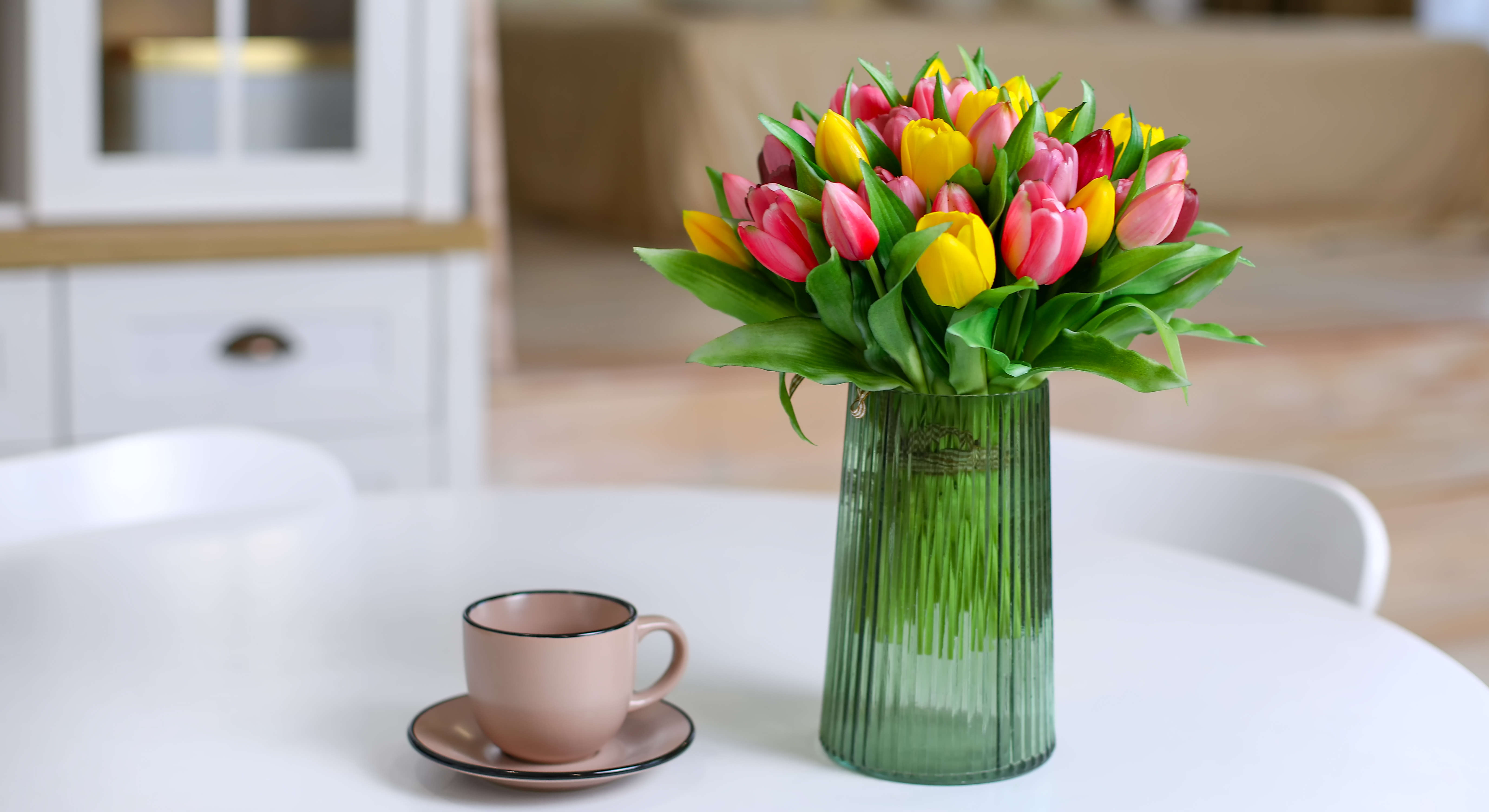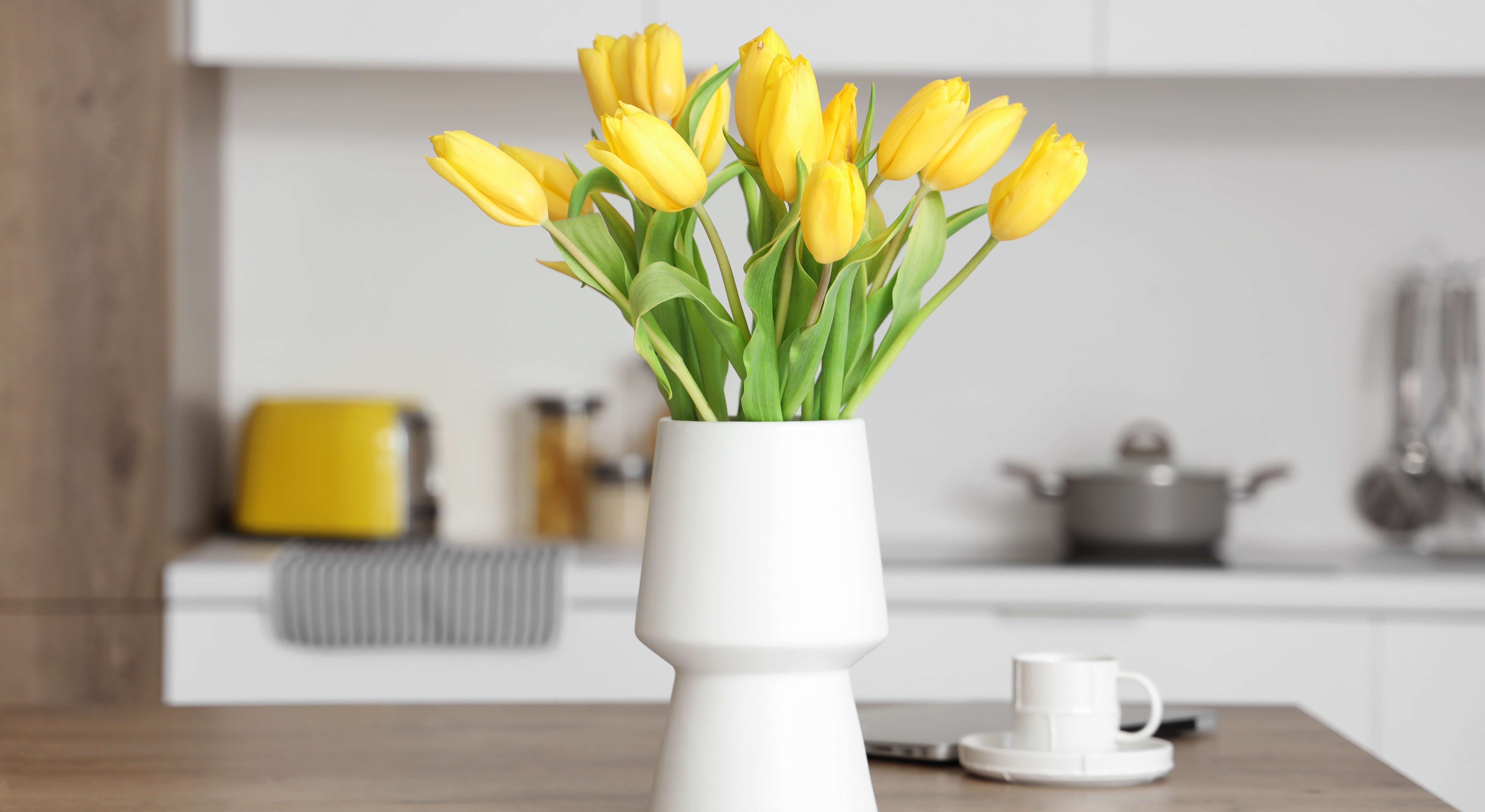How to keep your cut tulips fresh for longer — try these 5 top tips

Roses are the traditional flower given on Valentine’s Day, and florists are bursting at the seams with these delightful red-petalled blooms for the first half of February. But as soon as February 14th passes, it’s time for roses to move over and make space for another firm favorite — the beloved tulip.
Tulips are abundant at this time of year, filling florists and grocery stores with bright, colorful blooms. They signify a smile and a clear nod that spring is on the way. Although the bulbs look beautiful planted in flower beds or containers — my tulip bulbs are starting to shoot — they are a popular cut flower that can fill our homes with the joys of spring. Having freshly cut flowers in your home is also an interior design hack to make you home look more expensive on a budget.
However, tulips are prone to drooping and may only last for a few days without the correct care. Here, we share our top tips to keep your cut tulips fresh for longer so you can enjoy the first signs of spring inside your home.
You might also be interested in how to make your cut daffodils and other flowers last longer.
1. Be careful what you buy

You’ll want to get your money’s worth when buying any cut flower, particularly tulips. For this reason, you should look for a bunch where the buds are still closed but where the color of the flower is evident.
This is one of the nicest stages in the tulip’s life, as I particularly like the elegant shape of the flower head before the petals fully open.
Don’t be tempted to buy tulips with fully-opened petals (see image above), as they won’t last as long as those with unopened buds. If you purchase them while the buds are still closed and care for them correctly, your cut tulips can last up to ten days.
Get instant access to breaking news, the hottest reviews, great deals and helpful tips.
2. Choose the right vase

Tulips will appreciate being displayed in a tall vase, at least half as tall as the flower stems. The vase’s side will help support the stems and reduce the chance of the flowers drooping. Think of your vase as giving your tulips a firm hug. A tall vase also takes into account that the tulip's, unlike most cut flowers, continue to grow once they are placed in a vase.
The Aida tulip vase takes a flowy form and is designed specifically to hold tulips ($32, Royal Design), or you could try this modern tall ribbed glass vase ($31, Amazon).
If needed, the vase can be changed to a shorter one once the stems are shortened to keep them fresh — there’ll be more on this later. It’s also important to ensure the vase in clean before adding your tulips — if the vase contains bacteria it can shorten the life of your flowers. So, give it a good clean with warm soap and water to remove any remnants of what was in the vase before.
3. Prepare the tulips before placing in a vase

The tulips must be prepared before they are placed in the vase to give them their best chance of keeping fresh for longer. Firstly, remove any leaves which will sit below the waterline; this reduces the risk of bacterial growth in the water and keeps it clean and odorless, preventing the water from smelling murky.
Then, gather the blooms together so the buds are at the same height. You may want to measure the stems against your vase to work out your preferred height. Then, using a pair of sharp scissors or a knife, to ensure a clean cut, snip at least one inch off the stems at 45°. Cutting the stems at an angle, rather than straight across, leaves more surface space for water to be absorbed.
4. Tulips enjoy a good drink

Avoid keeping your tulips out of water for a long length of time, and if you’re not ready to trim the stems and place them in a vase as soon as you arrive home, place them in some cold water until you have time.
When you are ready, fill your vase half full with fresh cold water and add some flower food, which will help prolong the life of your tulips. It’s then advisable to change the flower water every day or every other day, as this will prevent bacteria growth, which will spoil the flowers. However, when doing this, always retrim the stems.
What ingredients does flower food contain?
The main ingredients in flower food are sugar, citric acid and bleach, but what role do they play?
- Sugar gives the tulips energy
- Citric acid lowers the pH level, allowing the tulips to absorb water faster while reducing wilting
- Bleach acts as a disinfectant by preventing the build-up of mold and other harmful bacteria
5. Position your vase away from direct sunlight

To encourage your tulips to last longer, place your vase away from direct sunlight, so avoid sunny windowsills. Tulips are sunseekers, and if placed in direct sunlight they will bend towards the light. I tend to place my tulips on my dining table that’s in the centre of my room, and away from any windows.
They’ll also thrive if kept away from direct heat. So, keep them away from radiators, heaters or kitchen stoves.
If you follow these top tips to prepare your tulips before placing them in a vase, keep the water fresh and position them away from direct sunlight and heat, you should be able to enjoy your beautiful cut tulips for up to 10 days.
As Spring arrives you might also be interested in 5 jobs to do in your yard in March.
More from Tom's Guide

Camilla is the Homes Staff Writer and covers everything to do with homes and gardens. She has a wealth of editorial experience, mounting over 30 years, and covers news and features, tests products for reviews and compiles buying guides.
Her work has appeared in business and consumer titles, including Ideal Home, Real Homes, House Beautiful, Homebuilding & Renovation, and Kitchen & Bathroom Business. She’s even appeared on the cover of Your Home, writing about her own house renovation.
Although she’s obsessed with decorating her home, she also enjoys baking and trying out the latest kitchen appliances. But when she’s not inside, you’ll find her pottering about in her yard, tending to her vegetable patch or taking in her prized hydrangeas.
